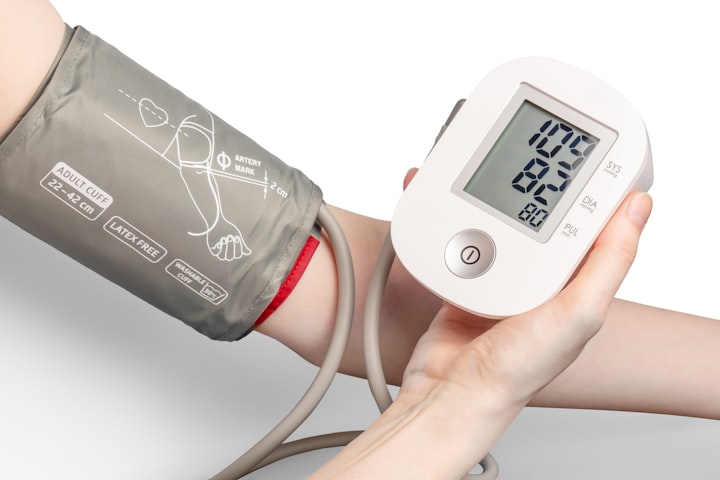Can Isometric Resistance Training Safely Reduce High Blood Pressure?
Can Isometric Resistance Training Safely Reduce High Blood Pressure?

Although previous studies have shown that IRT is effective in lowering blood pressure, the research office has not investigated the safety of IRT. Happily, we now know that simple interventions can do much to lower blood pressure, which is a major cause of death.
While it is fun for people with difficulty doing traditional exercises such as walking, cycling, and weight training, they should be aware that IRT also contains other forms of exercise that can help manage high blood pressure. Currently, IRT is not recommended for several international guidelines for the treatment of high blood pressure. This is due to concerns about its safety and the steady-state of IRT which can cause blood pressure to rise when exercise is performed in groups of larger muscles and strength than traditional strength exercises (such as dumbbells) or aerobic exercises (such as walking and cycling).
Evidence from aerobic exercise programs suggests that exercise can reduce the effectiveness of the sensitivity and blood pressure system, but according to the current study 317 the effect of overall fitness was not investigated by blood pressure and MSNA. Dr. Jones emphasizes how exciting it is to know that simple intervention can have a powerful effect on lowering blood pressure - leading to the risk of death -. These data support the idea that resistance training can be used as a training intervention to control or lower blood pressure and reduce one of the risk factors for developing heart disease.
Given the small number of isometric courses available, additional studies are guaranteed to confirm this. In addition, strength resistance training can affect other cardiovascular risk factors. Very little intervention training in resistance training studies in hypertensive cohorts.
Increasing evidence has shown that isometric exercise (IET) training can reduce BP rest in normal men and women in cars by 5-7% and lower BP by 8%. The IET's ability to lower the BP lying significantly higher than other types of exercise training was studied by Insider et al. IET has also been compared to strong resistance training in terms of muscle hypertrophy (13), high tetanic tension, and high level of strength (14) and muscle strength and endurance.
A new study investigated a specific method of movement to control high blood pressure: Isometric resistance training (IRT). You may be familiar with IRT tests that coaches or trainers call "isometric," such as pressing a wall or holding a plank.
For example, holding a wall, sitting on a plank or a push-up position is an isometric exercise. The funny thing is that there is no scientific explanation for what types of isometric exercises are produced by this work. The idea is to practice moderate and vigorous exercise for cardiovascular health, which often takes the form of physical activity such as walking, jogging, cycling, or swimming.
Moderate exercise has been shown to prevent high blood pressure and help in the treatment of high blood pressure stage 1. Strength training is promoted with aerobic training combined with aerobic training with the primary purpose of maintaining and improving muscle strength. The evidence is undeniable about the benefits of regular physical activity and increasing exercise should be a major goal for all levels of health.
Given the impact of global health challenges, there is a clear need for strategies to reduce the incidence of high blood pressure and obesity, and exercise is such a strategy. Aerobic strength training is effective in lowering blood pressure. A new study led by researchers from UNSW Medicine and Health has shown that isometric resistance training (IRT) is an emerging form of exercise that is effective in lowering blood pressure in the office.
Office blood pressure, for example, refers to blood pressure that is measured during a GP visit. Exercising vigorously can cause a significant increase in blood pressure, regardless of what you do. Avoid shortness of breath, and exertion or exertion exercises can cause a dangerous increase in blood pressure.
He says exercise is important in the treatment of high blood pressure, but researchers agree that many Australians are unemployed, with a lack of time cited as a reason. Previous meta-analyses have shown that certain types of exercise can lower systolic and diastolic blood pressure by up to 3 mm Hg3 and resistance training can reduce systolic blood pressure by 3 mm Hg4, but such activities are not widely accepted and not performed by all. lessons.
Hypertension (BP) [1-9] is the leading risk factor for global cardiovascular disease leading to an estimated 7 million deaths a year and 13% of all deaths worldwide2. Data from observational studies of healthy individuals show a direct, strong, independent, and continuous association between BP and cardiovascular disease, where at least 115/75 mm Hg3 is important in regulating the general public health of BP.





Comments
There are no comments for this story
Be the first to respond and start the conversation.